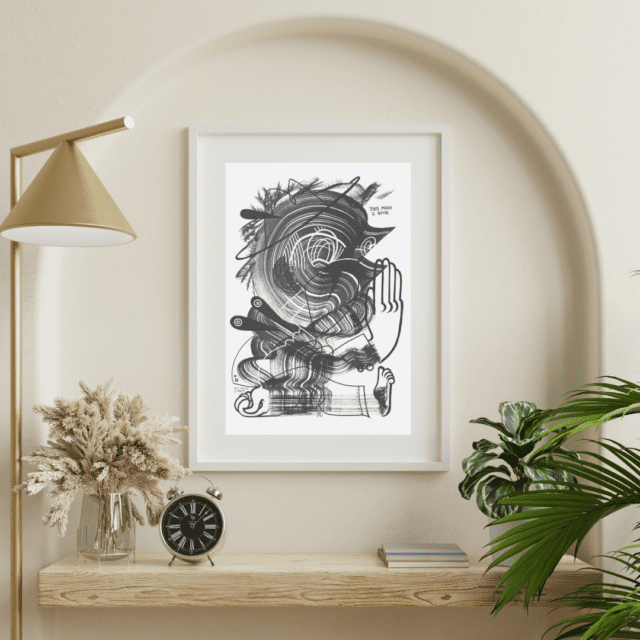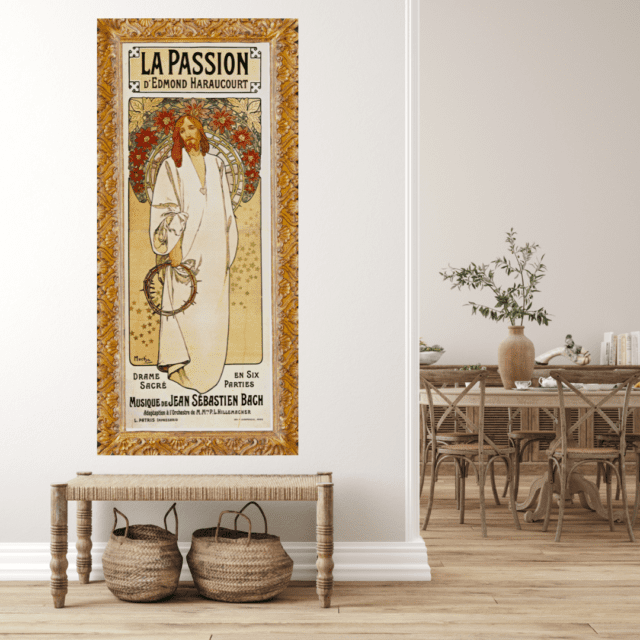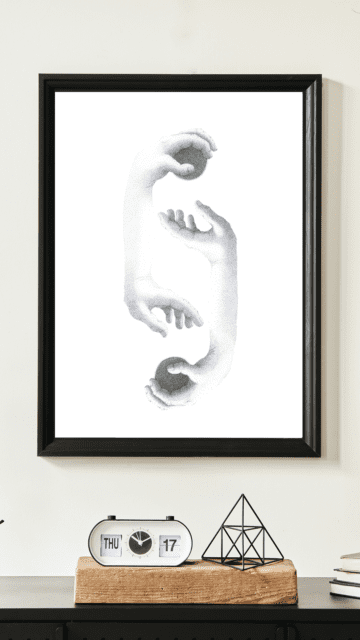The article explores how religious art, like depictions of Christ, can influence behavior and personal transformation. It highlights a study demonstrating that visual cues can lead to more ethical behavior and thoughts. The author, Stephanie Jaynes, co-founder of TheUrim.com, discusses the power of modern gospel art in inspiring individuals to overcome challenges, strengthen relationships, and deepen their faith.
Breaking Bad: How religious art can inspire change
By Stephanie Jaynes, Co-Founder of TheUrim.com
In 2011, psychologists proved that what you see can, in fact, influence what you get. And they did it with teddy bears and crayons.
Researchers Sreehari Deai and Francesca Gino wanted to find out if they could dissuade cheating. Their study participants played games, like fill in the missing letter to complete the word. The games were the same but the environment in which participants played the games were different. Half the subjects were in rooms with children’s toys and entertainment, like building blocks and cartoons. The other half, the control group, were in an ordinary room without any child-centered items.
The result? The number of research participants who cheated dropped by almost 20% when they played games in the rooms with childhood cues. Furthermore, they were more likely to think of words like “pure” and “virtue” during word completion games than the control group. Even if participants reported not feeling particularly happy or nice at the beginning of the study, the people in the testing room behaved better than their control peers. The researchers concluded that child-related cues may unconsciously encourage people to behave ethically.
Visual cues and reminders can do so much more than encourage us to play fair. Text messages reminding people of their savings goals and incentives can help them save 6% more. Leaving sticky notes around the house to remind you of goals and habits you want to form can increase your chances of success. Seeing someone who is kind and that you love can lower your stress levels. What we see can really impact how we feel and how we act.
Earlier this year, the Church of Jesus Christ of Latter-day Saints, to which I belong, sent out an email encouraging people to hang depictions of Christ in their homes to remind them of their covenants and commitments. This guidance came at the heels of my husband and I starting The Urim, an online store where people can buy modern gospel art. For years, we’d been craving religious artwork that matched our home’s contemporary aesthetic and kept coming up short. Finding the portrait of Christ we ultimately hung in our home–an art nouveau poster by Alfons Mucha, a prominent artist from the Czech Republic, where we both served missions–took nearly a year, from selection to printing and framing. Other members of the Church, we thought, had to be having the same problem.
And a lack of modern religious art isn’t just a decor problem; it’s a transformation problem. When art can serve as one of our best reminders of our values, commitments, and goals, a lack of artwork through which we can see ourselves and who we want to become is a big problem. Modern art specifically allows us to add more representations and interpretations of important spiritual concepts. Art can unlock our potential. Through my own Christian lens, it can help us become more like the Savior. Let me share a few examples.
For years, Arnold has struggled with pornography. His road to recovery has been painful as he’s repented as he’s fallen short and worked with his bishop to discover new ways to handle stress, anxiety, and loneliness. A therapist suggested he find ways to remind himself of his goal to stay away from pornographic ideas and images, and she suggested using tools like alarms and wallpapers on his phone to reach him at vulnerable parts of the day. One of the ways he can remind himself he can overcome temptation is with Brittany Soucy’s “I Can Choose My Thoughts.” Through abstract, vertical brush strokes in neutral hues, Soucy celebrates our God-given agency. For Arnold, the piece can help him feel hope and confidence.
For Glenn and Mariah, marriage has been hard. As they’ve changed jobs, relocated twice, and had kids, they’ve struggled to find balance and support each other. With Aubrie Mema’s “Helpmeet” hanging in their living room, they remind themselves that they’re together to lift and compliment each other. As they look at the pointillism hands passing apples back and forth, they can check-in with themselves to see if there’s something they can do to share the load better. Thinking of Adam and Eve, too, may remind them of the temple, their marriage covenants, and their eternal family.
A self-proclaimed intellectual, Andrea’s faith ebbs and flows as she wrestles periodic doubts about God’s presence, the Restoration, and continuing revelation. When she does have questions that lack easy answers, she sometimes finds herself feeling shame or inadequacy–especially as she strives to lead her family in scripture study and prayer or fulfill her Church callings. Lily Camille Howell’s “Until I Believe” can prompt her to be patient and cling to the convictions she does have. In the poem, created as Howell painted over a page of scripture and left only the words of the poem, Howell writes: “My Jesus and I walk until I believe.” This sentiment can give Andrea hope that, as she works with God and Christ to strengthen her faith, They’ll be patient with and loving toward her.
As we strive to fill our homes with art that speaks to our souls, we can find help becoming more like the Gods we worship. Like the teddy bears and crayons in the cheating experiment, depictions of the Savior and elements of His gospel can influence our thoughts, words, and actions for the better.
You can learn more about the art my husband and I sell at The Urim on our website, theurim.com, and on Instagram, @shoptheurim.
Stephanie Jaynes
Stephanie Jaynes is a Renaissance woman of marketing with a passion for journalistic reporting and writing and building brands that customers crave. As Co-Founder of The Urim, a modern LDS art store, she tells the stories behind abstract gospel art to help it resonate with customers. Through The Urim’s blogs and podcasts, Stephanie and her husband engage in captivating conversations about real-life marriage and family questions and issues to strengthen homes. She and her husband live in Eagle Mountain with their two kids.

Some stories are best told without a name attached. Whether it’s a firsthand experience, an opinion piece, or a sensitive topic, Cedar Valley Sentinel occasionally publishes content written by anonymous contributors or ghostwriters who wish to remain unnamed. These authors may be local residents, community leaders, or subject matter experts who want to share their perspectives, insights, or concerns with the people of Eagle Mountain, Lehi, Saratoga Springs, Cedar Fort, and Fairfield — without the spotlight.
Every anonymous submission is reviewed and fact-checked by our editorial team to ensure it aligns with our commitment to accurate, community-centered reporting in Northern Utah County.






